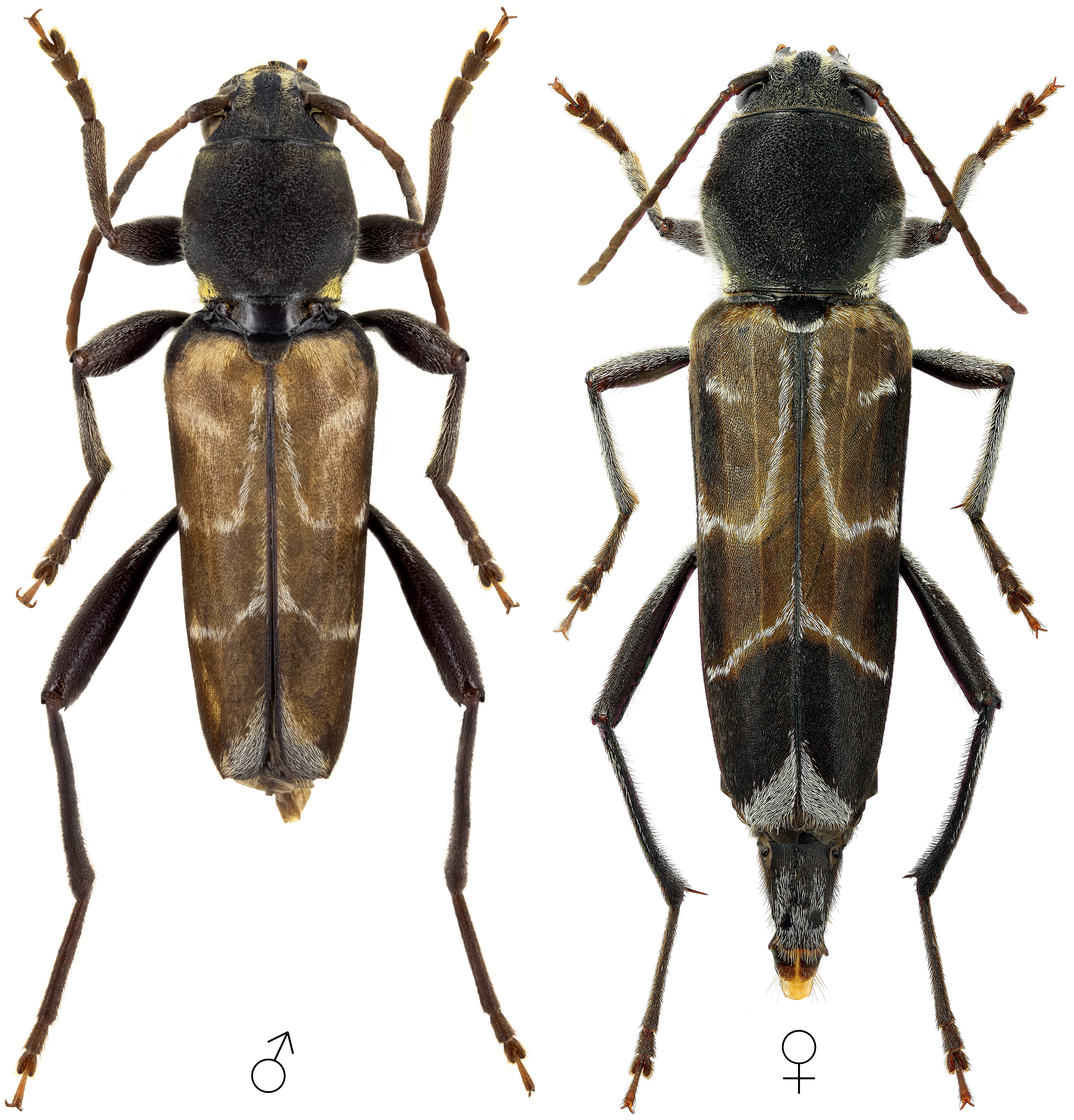Subfamilia: CERAMBYCINAE / Tribus: CLYTINI

[Photo © David Navrátil and Kirill V. Makarov, click on the picture for 4K resolution]
Xylotrechus cuneipennis, a North-East Asian species occuring in Russia, NE China, Japan, and Korea, has been described from East Siberia as Clytus (Xylotrechus) cuneipennis by Gustav Kraatz in 1879 [▽]. Larvae of X. cuneipennis develop in trunks or thick shoots of dying and dead deciduous tress (prefer Acer and Carpinus, also in Quercus, Ulmus, Betula, Alnus etc.). Larvae feed subcortically and later in wood, create galleries filled by fine frass. After the second overwintering they create a pupal cell in the upper wood layer at the end of the larval gallery. Life-cycle 2 years, adults are active in July and August and can be fouind on dying, uprooted or felled host trees [❖].
Body length: 12 - 24 mm Life cycle: 2 years Adults in: July - August Host plant: polyphagous in deciduous trees Distribution: Russia (East Siberia, Far East), NE China, Japan, and Korea
The depicted beetles were collected in: (♂) - Arsenyev (Арсе́ньев) environs (Primorsky Krai, Far Eastern federal district, Russia) in July 1990; (♀ 21 mm) Alokhinskaya outpost (Алёхинская застава) environs (N43°55′06″ E145°31′34″; Kurils Nature Reserve, Kunashir/Кунаши́р island, Kuril Islands, Yuzhno-Kurilsky district, Sakhalin region, Russia).Collected by our friends Robert "Robin" Čermák and Kirill V. Makarov
[✧]
Kraatz G.:
Ueber die Bockkäfer Ost-Sibiriens, namentlich die von Christoph am Amur gesammelten.
Deutsche entomologische Zeitschrift, Berlin 23 (1): 77-117, 1879. [download]
[❖]
Cherepanov A.I.:
Cerambycidae of Northern Asia, Volume 2 - Cerambycinae Part II.
Amerind Publishing, New Delhi: 354pp [pages 37-43], 1988. [download]
Han Y. and Lyu D.:
Taxonomic Review of the Genus Xylotrechus (Coleoptera: Cerambycidae: Cerambycinae) in Korea with a Newly Recorded Species.
Korean Journal of Applied Entomolology 49 (2): 69-82, 2010. [download]
| Subfamilia | Cerambycinae Latreille, 1802 |
| Tribus | Clytini Mulsant, 1839 |
| Genus | Xylotrechus Chevrolat, 1860 |
| Subgenus | Xylotrechus Chevrolat, 1860 |
| Species | Xylotrechus (Xylotrechus) cuneipennis (Kraatz, 1879) |
